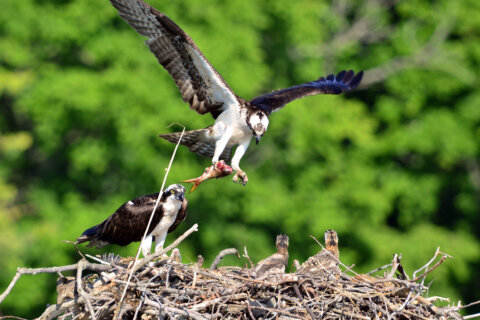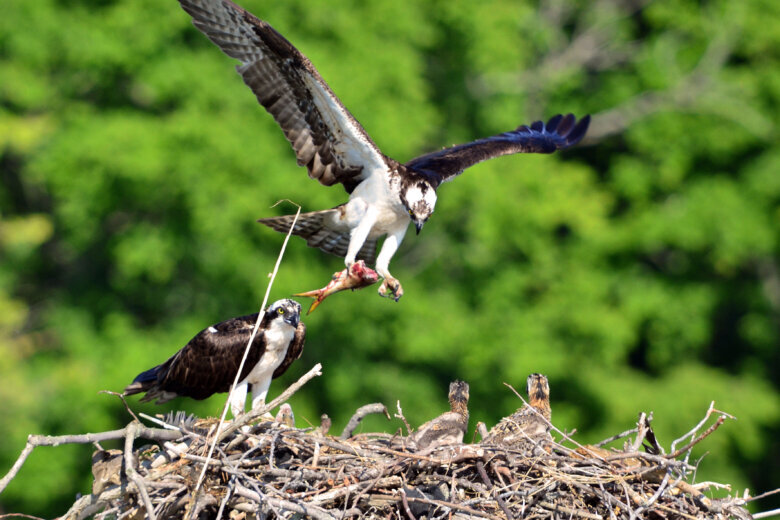
Ospreys — the large brown and white birds of prey that rule over the waterways of the Chesapeake Bay — are having a problem.
Osprey nests in Virginia’s lower Chesapeake Bay were failing at the highest rate ever recorded, according to a 2023 study. And a recent survey by the U.S. Geological Survey indicates that the number of young in osprey nests in the Chesapeake Bay is on the decline.
While ospreys face all kinds of challenges from predators like crows, owls and bald eagles, who feed on their chicks, environmentalists worry something else might be contributing to a dip in the population: lack of a critical part of their diet — menhaden.
Menhaden are small, silver fish that are about a foot long at maturity. Aside from being critical food for osprey, they are also a staple in the diets of bald eagles, dolphins, whales and rockfish.
“The reproductive rate of ospreys have dropped significantly over the years, and at this point, they’re not reproducing at a rate that is good enough to maintain their population in the Chesapeake Bay,” Chris Moore, Virginia executive director of the Chesapeake Bay Foundation (CBF), told WTOP.
A 2023 study by William and Mary’s Center for Conservation Biology found that the reproduction rate of ospreys in the Mobjack Bay area was about 0.13 for each pair of osprey under the study. That meant that only one in 10 of each pair was successfully producing chicks.
That has prompted the Atlantic States Marine Fisheries Commission (ASMFC) to put together a work group to consider adding restrictions on the industrial fishing of menhaden in the Chesapeake Bay.
ASMFC’s work group will consider limiting large-scale menhaden fishing to certain areas of the bay, or introducing seasonal closures to industrial fishing.
That would likely impact the operations of Omega Protein, which operates the only menhaden reduction plant left on the Atlantic coast, located in Reedville, Virginia. Reduction refers to the processing that converts the fish into products used in nutritional supplements, livestock feed and feed used in fish farming.
Omega has argued in the past that federal surveys indicate menhaden populations on the East Coast were not overfished, while environmentalists and recreational sportfishers have countered those findings don’t focus on the impact to the Chesapeake Bay, where most of the industrial scale fishing takes place.
In a statement, Moore with CBF said, “It’s more apparent than ever that we need to better protect the Bay’s menhaden resource. For decades we’ve been concerned about industrial harvest of this species, and CBF has long fought to ensure enough menhaden are left in the water for a healthy ecosystem.”
The newly formed work group by the ASMFC will present the results of its discussions at its October meeting.
Get breaking news and daily headlines delivered to your email inbox by signing up here.
© 2024 WTOP. All Rights Reserved. This website is not intended for users located within the European Economic Area.









